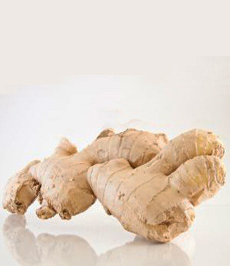PRODUCT: Reed’s Ginger Ale For National Ginger Ale Day
|
March 13th is National Ginger Ale Day. We’ve been drinking ginger ale since early childhood—Mom gave it to us not as much as a soft drink, but as a palliative for stomach aches. It still works! In fact, ginger tea has been brewed for centuries, if not millennia, to aid with everything from indigestion to arthritis (it’s an anti-inflammatory). Just steep slices of fresh ginger root in hot water. Here’s more from Web MD. But back to ginger ale: Fortunately for those of us who reserve our sugar calories for dessert, ginger ale manufacturers make no sugar added* versions in addition to the classic sugar-sweetened (or in the case of the three largest brands, high fructose corn syrup-sweetened†). We like our ginger ale to sizzle with spicy ginger flavor. The top national brands (Canada Dry, Schweppes, Seagrams) are too subtle in flavor for us. They use “flavoring” instead of fresh ginger, and there’s not enough spice. That’s why we like Reed’s ginger ale: real ginger, more spice. Before ginger ale there was ginger beer; and before the days of commercial sodas, Reed’s tells us, ginger beers were made at home with a large amount of ginger. The company searched for a traditional homemade recipe, and found a Jamaican formula that uses all-natural ingredients that you might have in your own fridge: fresh ginger root, sparkling water, pineapple juice, lemon juice, lime juice, honey, cane sugar and spices. If you want to test your palate, here’s how Reed’s describes the flavor: Reed’s Original Real Ginger Ale is sweetened with cane sugar. Reed’s Real Ginger Ale Zero Sugar is sweetened with erythritol, reb A (stevia leaf extract), and monk fruit extract. There’s no National Ginger Beer Day, but we would be remiss not to mention Reed’s Ginger Beer (it’s a non-alcoholic ginger beer). Truth be told, we love ginger beer even more than ginger ale. It has that much more power and punch: Yowza! Reed’s brews it in three strengths, too: Original, Extra (two times the ginger of Original) and Strongest (three times the ginger). Think of them as Spicy, Spicier and Spiciest. The Strongest can take your breath away. We love it. Reed’s Ginger Beer is what you want for your Moscow Mule. Speaking of which, there are cocktail and mocktail recipes on Reed’s website. |
|
|
|
*No Sugar Added (also called Unsweetened) and Sugar Free are different terms. No Sugar Added means just that: the manufacturer has added no sugar or other caloric sweetener to the product. However, some ingredients contain naturally-occurring sugar—think of fruit and milk products, which have naturally-occurring sugars: fructose and lactose, respectively. These cannot be called Sugar Free. Sugar Free (also called Zero Sugar and Sugarless) means that a product contains less than 0.5 g of sugar and less than five calories per serving. †High fructose corn syrup, abbreviated HFCS, is a sweeter form of corn syrup made from corn starch. The process was developed in the 1970s and introduced widely into American processed foods in the 1980s. It’s 20% cheaper and easier to transport than sugar. HFCS is used by manufacturers as a substitute for ordinary sugar (sucrose) in soft drinks and other consumer goods—yogurt, frozen foods and foods where you don’t expect to find sweeteners, such as bread, pasta sauce and soup. HFCS in beverages seems to have the effect of stimulating the appetite. This, coupled with the pure caloric content of beverages sweetened with HFCS, and the preference of children and adults for soft drinks over nutritious beverages (milk, juice), is thought to be a cause of increased levels of obesity in America. Check out the different types of sugar. Here are the different types of noncaloric sweeteners.
|
||






